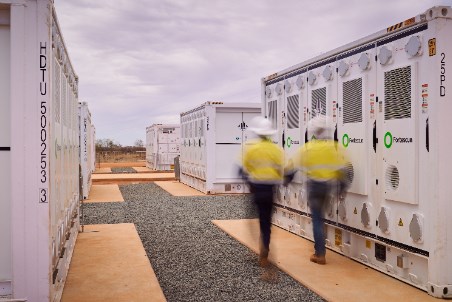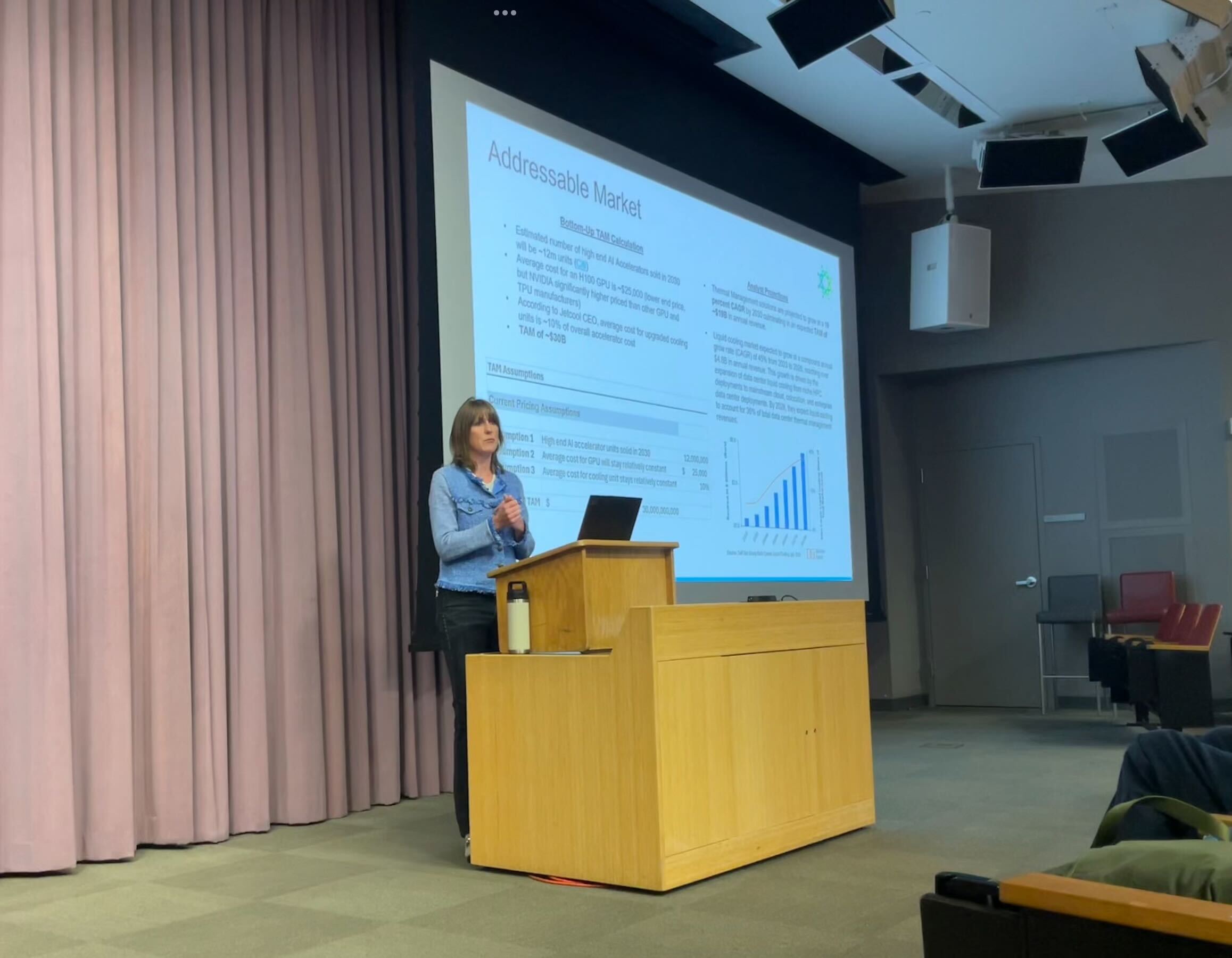Award of Merit, Energy/Industrial: University of New Hampshire Thermal Energy Storage Tank (TES) – Engineering News-Record | ENR

Project Report: University of New Hampshire Thermal Energy Storage (TES) Tank
Executive Summary
The University of New Hampshire’s $10.3-million Thermal Energy Storage (TES) Tank project in Durham, N.H., represents a significant advancement in sustainable campus infrastructure. The 1.4-million-gallon facility enhances energy efficiency by producing chilled water during off-peak hours, directly aligning with several United Nations Sustainable Development Goals (SDGs), particularly those concerning energy, infrastructure, climate action, and community partnerships.
Alignment with Sustainable Development Goals (SDGs)
SDG 7: Affordable and Clean Energy
The primary function of the TES tank is to shift energy consumption to off-peak nighttime hours. This strategic energy management directly supports SDG 7 by:
- Reducing the university’s energy costs, making operations more economically sustainable.
- Increasing energy efficiency on a large scale, lessening the strain on the local power grid during periods of high demand.
- Promoting the adoption of cleaner and more efficient energy technologies within a major institution.
SDG 9: Industry, Innovation, and Infrastructure
This project is a model for resilient and innovative infrastructure. The integration of the new TES system with an existing chiller plant required sophisticated engineering solutions, contributing to SDG 9 through:
- The development of robust, sustainable infrastructure through the installation of extensive underground piping and necessary electrical upgrades.
- The use of a design-build model that fostered early collaboration to overcome unforeseen site issues and technical challenges, such as a shortfall in available electrical capacity.
- Upgrading institutional infrastructure to be more efficient and resilient for future needs.
SDG 11: Sustainable Cities and Communities & SDG 17: Partnerships for the Goals
The project enhanced community safety and resilience through a strategic partnership, directly addressing SDG 11 and SDG 17. Key actions included:
- Engaging the local fire department for a high-angle rescue training exercise within the 47-ft-tall, 80-ft-diameter tank.
- Identifying, through this collaboration, that traditional rescue gear was unsuitable for the unique industrial environment.
- Donating construction-grade fall protection and rigging equipment to the fire department, thereby strengthening their emergency response capabilities for the entire community.
- Demonstrating a successful multi-stakeholder partnership involving the university, design firms, engineers, contractors, and local emergency services.
SDG 13: Climate Action
By optimizing energy consumption, the TES tank is a tangible measure in support of climate action. The system helps mitigate the university’s environmental impact by reducing the overall carbon footprint associated with its cooling needs, a critical step in addressing climate change at an institutional level.
Project Execution and Management
Technical and Operational Challenges
The project team successfully navigated several significant challenges, including:
- Complex integration with existing campus utility systems.
- Managing major construction activities on an active campus with minimal disruption.
- Addressing unforeseen site conditions and electrical capacity limitations through adaptive operational adjustments.
Health and Safety Protocols
Worker safety was paramount, especially given the hazardous nature of the work environment. The project involved significant confined space and high-angle work inside the massive tank structure. In response, the team implemented enhanced fall protection protocols and proactively engaged with local emergency services to ensure preparedness for any potential incidents, which ultimately led to a stronger community partnership.
Analysis of Sustainable Development Goals in the Article
-
Which SDGs are addressed or connected to the issues highlighted in the article?
The article on the University of New Hampshire’s Thermal Energy Storage Tank (TES) addresses several Sustainable Development Goals (SDGs) through its focus on energy efficiency, infrastructure development, and community collaboration.
- SDG 7: Affordable and Clean Energy: The project’s primary purpose is to produce chilled water during off-peak hours to reduce energy costs, directly contributing to energy efficiency.
- SDG 9: Industry, Innovation, and Infrastructure: The construction of the $10.3-million, 1.4-million-gallon tank represents a significant investment in resilient, sustainable infrastructure that utilizes innovative technology for energy management.
- SDG 11: Sustainable Cities and Communities: The project enhances community resilience by partnering with the local fire department, improving their emergency response capabilities and strengthening community ties.
- SDG 17: Partnerships for the Goals: The article highlights the importance of collaboration, mentioning the “coordination with multiple stakeholders” and the specific partnership between the construction team and the local fire department to achieve project and community goals.
-
What specific targets under those SDGs can be identified based on the article’s content?
Specific targets can be identified by analyzing the project’s objectives and outcomes as described in the article.
-
SDG 7: Affordable and Clean Energy
- Target 7.3: By 2030, double the global rate of improvement in energy efficiency. The article states that the TES tank “significantly reduc[es] the university’s energy costs” by producing chilled water during off-peak hours. This is a direct implementation of an energy efficiency measure.
-
SDG 9: Industry, Innovation, and Infrastructure
- Target 9.4: By 2030, upgrade infrastructure and retrofit industries to make them sustainable, with increased resource-use efficiency and greater adoption of clean and environmentally sound technologies. The TES tank is a modern, clean technology integrated into the university’s existing chiller plant to increase the efficiency of its energy resources.
-
SDG 11: Sustainable Cities and Communities
- Target 11.b: By 2020, substantially increase the number of cities and human settlements adopting and implementing integrated policies and plans towards inclusion, resource efficiency, disaster risk reduction and resilience. The project contributes to this target by improving resource (energy) efficiency and enhancing local disaster resilience through the training and equipping of the local fire department for high-angle rescues.
-
SDG 17: Partnerships for the Goals
- Target 17.17: Encourage and promote effective public, public-private and civil society partnerships. The project’s success is attributed to “Early collaboration across the design-build team” and involved the university (public), multiple private companies (Consigli Construction Co., DN Tanks, etc.), and a civil service entity (local fire department), exemplifying a multi-stakeholder partnership.
-
-
Are there any indicators mentioned or implied in the article that can be used to measure progress towards the identified targets?
The article provides several qualitative and quantitative indicators that can be used to measure progress.
-
For Target 7.3:
- The article implies a financial indicator through the statement about “significantly reducing the university’s energy costs.” This cost reduction is a direct result of improved energy efficiency.
-
For Target 9.4:
- A key indicator is the investment in sustainable infrastructure, explicitly stated as a “$10.3-million tank.” This financial figure quantifies the investment in clean technology.
-
For Target 11.b:
- A specific indicator of progress is the action taken to improve community readiness for emergencies. The article mentions that “the team donated construction-grade fall protection and rigging equipment to the department,” which is a tangible contribution to local disaster risk reduction capabilities.
-
For Target 17.17:
- The formation of a multi-stakeholder partnership is an indicator. The article lists the numerous partners involved, including the owner, design firm, general manager, engineers, and subcontractors. The specific action of “strengthening community partnerships” with the fire department is a clear indicator of an effective partnership in action.
-
SDGs, Targets, and Indicators Summary
| SDGs | Targets | Indicators |
|---|---|---|
| SDG 7: Affordable and Clean Energy | Target 7.3: Double the global rate of improvement in energy efficiency. | The project “significantly reduc[es] the university’s energy costs” by using off-peak electricity, implying a measurable improvement in energy efficiency. |
| SDG 9: Industry, Innovation, and Infrastructure | Target 9.4: Upgrade infrastructure to make it sustainable and increase resource-use efficiency with clean technologies. | The “$10.3-million” investment in a 1.4-million-gallon thermal energy storage tank, a clean and efficient technology. |
| SDG 11: Sustainable Cities and Communities | Target 11.b: Implement integrated plans for resource efficiency and disaster risk reduction and resilience. | The donation of “construction-grade fall protection and rigging equipment” to the local fire department to improve their readiness for emergencies. |
| SDG 17: Partnerships for the Goals | Target 17.17: Encourage and promote effective public, public-private and civil society partnerships. | The successful collaboration between multiple stakeholders (university, contractors, engineers) and the specific action of “strengthening community partnerships” with the local fire department. |
Source: enr.com
What is Your Reaction?
 Like
0
Like
0
 Dislike
0
Dislike
0
 Love
0
Love
0
 Funny
0
Funny
0
 Angry
0
Angry
0
 Sad
0
Sad
0
 Wow
0
Wow
0
















































:focal(1500,1000)/https://media.globalcitizen.org/a6/9a/a69a4720-d8a1-4715-b596-18738d03c05c/rotary_polio_hero_image.jpg?#)







/countries/sri-lanka/photo-credit---dmc-sri-lanka.tmb-1200v.jpg?sfvrsn=dc298bcc_1#)




















